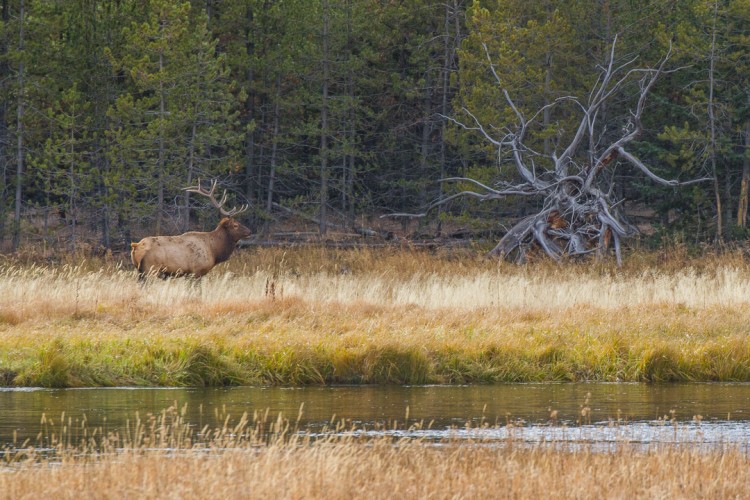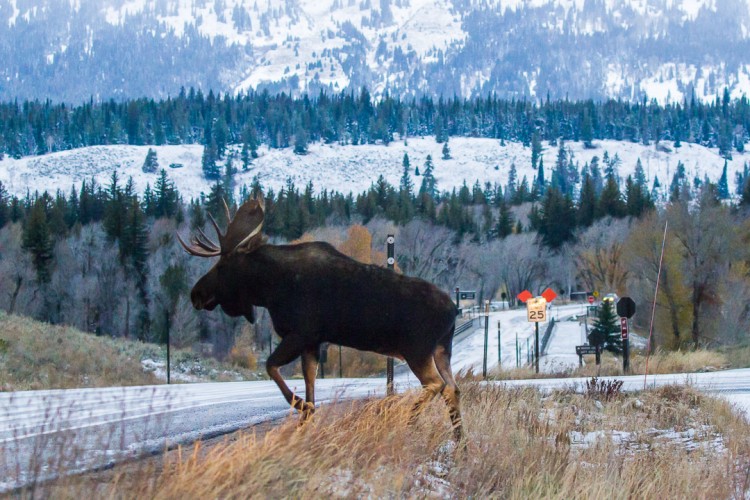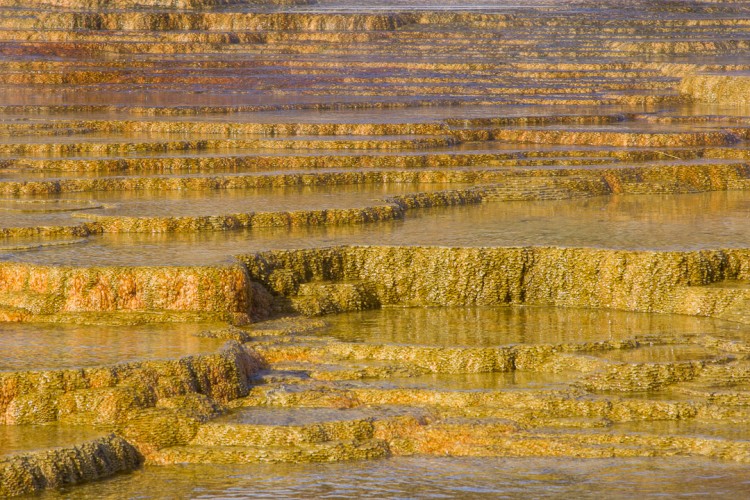Conservation Conversations, Fall Wildlife Safari with the Greater Yellowstone Coalition


Located at the interior of over 20 million acres of diverse habitat, Grand Teton and Yellowstone National Parks are often seen as the core of what is called the Greater Yellowstone Ecosystem (GYE). As one of the last relatively intact temperate ecosystems left on earth, the GYE is home to massive mammal migrations, the largest remaining wild bison herd, diverse bird species, grizzly bears, wolves and more. This October, Jackson Hole Ecotour Adventures partnered with our friends at the Greater Yellowstone Coalition to share the GYE with Coalition members, an intimate three day exploration of Grand Teton and Yellowstone National Parks.
Migrations Fuel the Landscape
At around 310,000 acres, Grand Teton National Park is a small but mighty sister to the much larger Yellowstone National Park, just to the north. The towering peaks of the Teton Range rise 7000 feet out of the Jackson Hole Valley, a dramatic backdrop for the park’s diverse wildlife.
Before dawn, Ecotour Adventures guides Mark Byall, and myself (Josh Metten) met with GYC Wildlife Program Coordinator Chris Colligan and 10 coalition members to begin our exploration of the Greater Yellowstone Ecosystem. Driving north in the predawn light, we passed the National Elk Refuge, winter range for over 9000 elk. In the coming months, herds will begin arriving on the Refuge, some migrating all the way across the valley from Yellowstone National Park.

A tall fence separates the refuge from the highway, built to prevent wildlife collisions with vehicles. As Chris and I were talking about wildlife collisions we noticed a cow, calf, and bull moose running along the fence just off the road. The trio was attempting to access the Gros Ventre River but were on the wrong side of the fence. Eventually, led by the female they safely crossed the road in front of us, and ran down into the safety of the river bottom.
Highways represent major obstacles to wildlife across the globe, and thankfully many organizations, including the Greater Yellowstone Coalition, are working with state Transportation Departments to place wildlife crossings such as overpasses and underpasses in areas of high wildlife mortality.

A bull moose crosses the road in Grand Teton National Park. Last year at least 18 moose were killed by cars in the Jackson Hole Valley alone.
Heading north through the Jackson Hole Valley we passed through summer range for pronghorn antelope, who winter 100 miles south of Grand Teton National Park. Traveling along the federally protected “Path of the Pronghorn,” animals must navigate barb wire fences, private land development, rivers, and dangerous highways before arriving on a winter range increasingly under threat from oil and das development. But they persist, moving along a route which their ancestors have traveled for the last 6000 years.

Migrations of the Greater Yellowstone Ecosystem aren’t just on foot, they are also on the wing. On our way towards Yellowstone we observed a massive flock of American Coot, Redhead, Mallard, Wigeon, and other duck species. In a behavior known as ‘rafting’ the birds were concentrated in a tight clump on Jackson Lake. Their frightened behavior was justified, as three bald eagles were circling the group looking for an opportunity to strike. A juvenile eagle, lacking a white head dove down into the flock and grasped a bird in its talons. After struggling to take flight, the eagle was off with its prize, only to be chased down by a mature, 5 year old plus adult eagle who stole it out of midair.
Northern Yellowstone, Mammoth Hot Springs
In search of more wildlife sightings, we headed towards the Lamar Valley for our second day. Just downstream of Mammoth Hot Springs, near the northern entrance of Yellowstone, we glassed up two herds of bighorn sheep on the slopes of Mount Everts. Alpine specialists, bighorn sheep are usually found in rugged terrain where they have an advantage over predators. We also found a herd of pronghorn antelope just north of the park boundary, presumably migrating towards lower elevation habitat in Montana’s Paradise Valley.

Giving Bison the Freedom to Roam
As the road heads east from Mammoth, the landscape opens up into large meadows with forested mountain ridgelines above. This rugged landscape holds a dense concentration of wildlife with the Lamar Valley holding the highest numbers of bison in Yellowstone. It was here, beginning in the late 1800’s that the U.S. military began a captive breeding program to restore bison herds which had been nearly wiped out. Bison have made a spectacular recovery and the GYC is now working to expand their habitat to over 400,000 acres beyond the park boundaries, much of which currently is off limits.

Howling Wolves, the Call of the Wild
Just as the Lamar Valley was a home for bison restoration, it is also a home for wolf restoration. Wolves were reintroduced here in 1995 after a 60 year absence, and are now thriving across the Greater Yellowstone Ecosystem. As the sun rose over the Absaroka Mountains to the east on our third morning we stopped to glass for wolves and enjoy breakfast in the field. Elk and bison herds grazed in the distance, and a juvenile bald eagle landed in nearby tree. We noticed some black spots across the valley, too small to be bison. Spotting scopes confirmed our hopes, we had found wolves! Three members of the Junction Butte Pack, including the alpha female were socializing on a far hillside, their howls audible in the still morning air. Yellowstone contains around 100 wolves, and over 1600 roam the Northern Rockies.
Keeping the Ecosystem Whole
The resilience of all wildlife within the Greater Yellowstone Ecosystem is what makes this place whole, and the restoration of wolves was an important step. Today the GYC is working to keep other large predators, including grizzly bears thriving. In the 1970’s grizzly populations crashed down to an estimated 135 animals, leading to their listing as a Threatened Species. Today populations have rebounded to over 700 and the bears were recently delisted. Towards the end of our third day, back in Grand Teton National Park, we spotted a sow and two cubs foraging in the sagebrush flats. Protecting habitat, reducing conflict and ensuring the connectivity of these bears to other populations in the Northern Rockies will be critical to their continued survival.
As we completed our three day journey across the Greater Yellowstone Ecosystem I pondered the founding premise of the Greater Yellowstone Coalition: “An ecosystem will remain healthy and wild only if it is kept whole.” The return of bison, bears and wolves to the ecosystem is a part of the ecosystem. Protecting the migration corridors of elk, pronghorn, mule deer and bighorn sheep is another. So is conserving our watersheds, and the overall preservation of the wild landscapes around us. When it comes down to it the fate of the Greater Yellowstone Ecosystem rests with people, the final part of this ecosystem.

To learn more about our “Commitment to Conservation” or joining a safari with Jackson Hole Ecotour Adventures visit our website or give us a call at (307) 690-9533. We hope to see you soon!
Photos and blog by Naturalist Josh Metten













